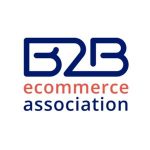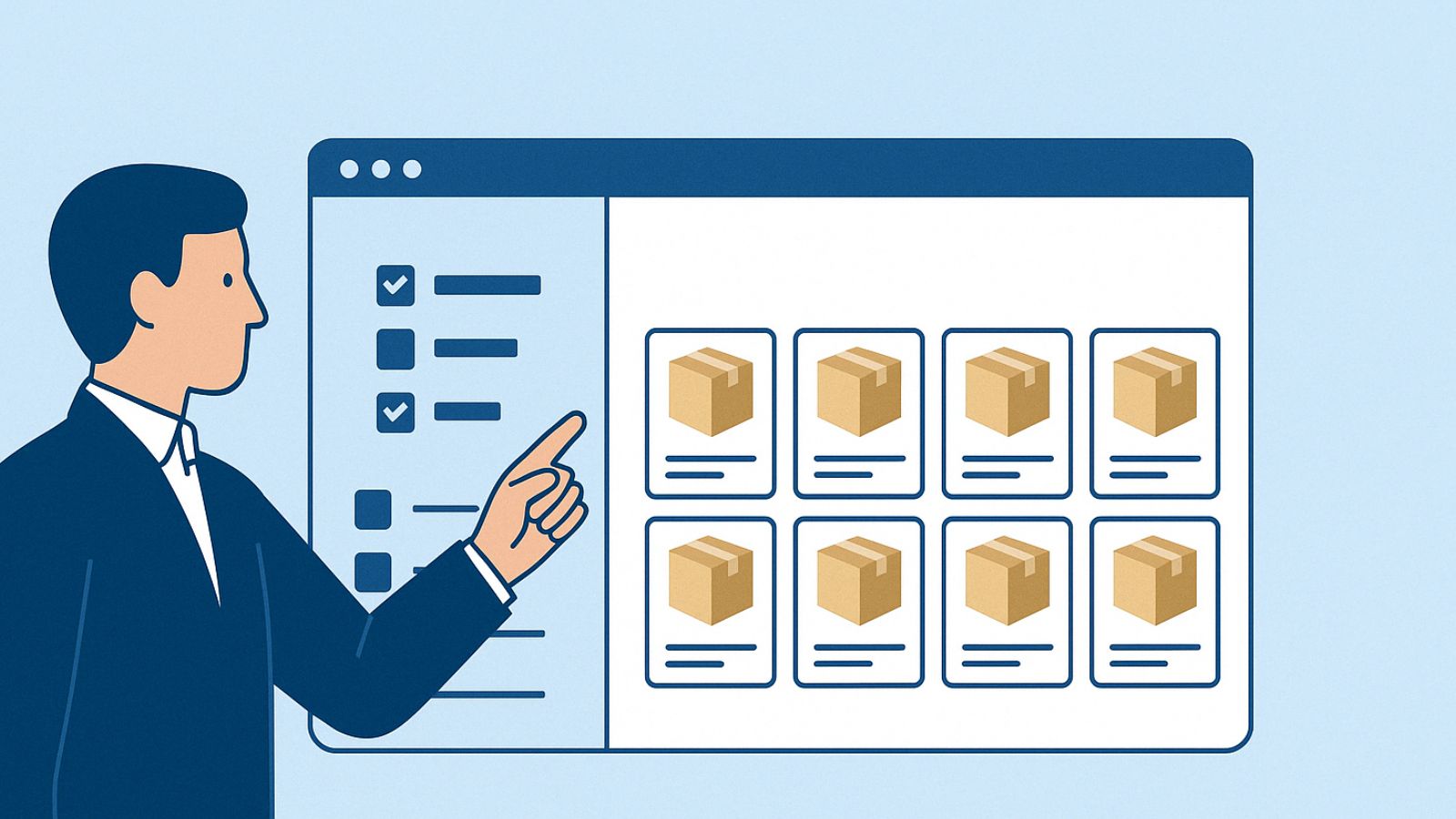Digitalization has become an irreversible trend in every industry in this new era, making people’s working and leisure lives smarter and more convenient. Most people have been familiar with e-commerce giants like Amazon, Alibaba and other consumer goods platform, but few may know about MRO e-commerce platforms, which belongs to the industrial internet. This in-depth article from EqualOcean will analyze China’s MRO market thoroughly. Founded in October 2018, EqualOcean International is an international information service provider and investment research firm that aims to become a global platform for industrial innovation.

MRO, short for Maintenance, Repair, and Operations, constitutes a category of industrial goods that will be purchased and used in the processing or operation of enterprises together with PM (productive materials). Compared with consumer goods, industrial goods have higher requirements for professional technology and unbreakable industrial thresholds.
PM is the direct productive material that constitutes the final industrial product. While MRO refers to the products and materials used to maintain the daily operation of enterprises rather than directly used in the manufacturing process of finished products. Typical MRO products include office supplies, hardware, etc.

Digitalization is sweeping the world. The MRO industry is no exception. Digital MRO platforms have emerged to replace agents and other intermediaries. The industry’s digitalization started a decade ago. Many reasons have catalyzed this tide.
1. Government Policy
Chinese central government has issued lots of policies to support the digital construction of industries in recent years to build up its market strength. For example, the 14th Five Year Plan published in 2021 and the Government Reports in 2021 and 2022 have stressed deepening the digital application in key fields, especially the industrial internet where MRO is one of the vital links. SMEs’ digital transformation has also been underlined in these crucial official documents.
2. Economic Environment
Digital economy development has become a new driver for China’s economic development, verifying industry digitalization is undergoing a strategic opportunity. According to iResearch.Inc., China’s Industry market scale reached over CNY 12 trillion(USD 1.88 trillion) in 2021, which was expected to keep an annual growth rate of 16% for the next 3 years. Besides, major investors including Matrix Partners, Sequoia Capital Partners and Eastern Bell Capital have thrown money at MRO platforms in recent years. All of these working together means a sea of business opportunities for both enterprises involved and the MRO industry.

3. COVID-19
The pandemic has been considered as an important factor to promote the intensive transformation of the MRO industry where companies originally buy these products or ask for service in local specialty or general stores. Repeated outbreaks of the pandemic have severely affected the normal operation of bricks-and-mortar shops. In most cities, stores have to close their doors because of the quarantine policy, while express delivery may face stricter disinfection measures but have less possibility of being cut off directly. As a result, more and more buyers would like to resort to MRO platforms rather than physical stores. The imbalance between supply and demand caused by the pandemic has also further pushed enterprises involved in the supply chain of MRO to embrace digitalization.
4. Technology
A new generation of information technologies — including big data, artificial intelligence and the Internet of Things — has been promoted and applied rapidly. This has laid a solid industrial foundation for the digital transformation of the Industrial B2B market. Now some MRO platforms have relied on big data to analyze and predict the market demand, AI technology to accurately match upstream and downstream requirements, and IOT technology to improve the efficiency of logistics management. The maturity of technology will promote the rapid development of the industrial B2B platforms.
5. Internal Need
China’s MRO industry has faced multiple challenges, new and old, during the process of digitalization.
For MRO producers, it’s often costly for them to find new customers, especially new customers. Besides, industrial goods, especially long-tail products, have numerous SKU types (SKU: Stock Keeping Unit, the smallest available unit to keep inventory control). Meanwhile, the uniform standard is absent. For example, the name of the same product may differ from company to company. Thus, it may be tricky to effectively match needs with supply. From this perspective, the digitalization of MRO is far from fledged. Many providers lack professional online operation teams and knowledge of the B2B platform of industrial goods.
For MRO buyers, traditional procurement lacks transparency, and the price of products is inflated with multiple deals and agents between providers and customers. It’s also inefficient to manually collect data on products that are needed and provided in the market. Besides, the low level of synergy in the traditional supply chain increases the difficulty of delivering products on time. As mentioned above, numerous SKU types of industrial goods trouble downstream purchasers that are weak at supply chain management. Therefore, inactive inventory is produced, and the stock cost is pushed up. Lastly, rarely met are the needs of buyers to install, debug and repair some industrial goods for their companies.
The Status Quo of the MRO Industry in China
According to Data Bridge, the global MRO market is valued at USD 713.59 billion in 2021. Its value is expected to reach USD 1007.06 billion by 2029, registering a CAGR of 4.40% during the forecast period of 2022-2029. While in China, the world’s factory, the MRO market reached CNY2.48 trillion (USD 368 billion) in the same year, accounting for 20% of China’s industrial goods market, data from iResearch shows. Players are pouring into such a market worth CNY 2.48 trillion.
Now domestic MRO players can be mainly divided into four kinds: First, e-commerce giants with deep pockets and rich resources in logistics who expand their business from B2C(Business to Customer) to B2B(Business to Business), including mro.jd.com founded by JD (NASDAQ:JD) and imall.1688.com by Alibaba (09988). Second, traditional manufacturers and industrial enterprises who transform into internet-powered buying platforms, including Yigongpin(Chinese:易工品). Third, traditional merchants stepping into MRO e-commerce platforms, including Xinfangsheng (Chinese:鑫方盛), Leading Future(Chinese:领先未来), ZKH(Chinese:震坤行) and EHSY(Chinese:西域). Fourth, foreign MRO titans like Fastenal and Grainger (GWW).

These four groups have their respective advantages in technology, and human or financial resources, which are brought by their decades of cultivation in industries before transformation, to develop MRO business. It is hard to say who will be the most successful one. Chengyu Wang, the general manager of Leading Future made a comparison: the current competition is more like the era of the Spring and Autumn Period where dukes tried every best to gain more land or people but in an orderly way. He thought though there are some outstanding players, they still face challenges and threats. This uni-multipolarity model is doomed to build a bullish MRO market in China.
These “newcomers” are vying for a place in the market with their cutting-edge technology or industry accumulation, competing with more experienced and established players. In the blue sea of the Chinese MRO market, how can an MRO company survive and grow? This article will analyze the performance of three players including Leading Future, EHSY and ZKH from four perspectives — profit model, supply chain service, quality control and technology application — to help you find the answer.
-Leading Future, founded in 2007, has been committed to providing full-scene procurement digital solutions through a comprehensive service platform in B2B. It was an offline retailer in office supplies originally.
-ZKH Industrial Supermarket, established in 1998, is a first-tier digital MRO platform, providing customers with one-stop industrial supplies procurement and management services. It has completed 7 rounds of financing, with cumulative funding of approximately CNY 6 billion(USD 886.7 million).
-EHSY, founded in 2002, is a B2B e-commerce platform focusing on industrial products. The company labels itself an “expert in MRO digital supply chain”. It has finished five rounds of financing with IDG Capital and CICC Alpha among its investors.
1. Business Model
In the crowded MRO market, it’s increasingly clear that digital MRO platforms mainly adopt two different business models: direct retail or platform. Companies choosing the former model often serve large clients and profit from the markup from products sold to customers. JD MRO, EHSY, Leading Future, Xinfangshen fall into this category. EHSY said its customers cover 80% of central and state-owned enterprises and 60% of Fortune 500 companies in China. While those adopting the latter, such as 1688 of Alibaba (Chinese:1688商城), BWC Mall (Chinese:佰万仓) and Ruigu Shop (Chinese:锐锢商城), earn service fees and commissions on merchandise sold on their platforms with SMEs as their primary customers.
The type of clients dictates the business model of MRO platforms. For industrial behemoths, their MRO purchases are frequent but take up only a tiny portion of the overall procurement amount. Thus, they demand efficient procurement and one-stop service. Companies dealing with these clients play the role of direct retailers. They establish their procurement, warehousing and delivery system to provide quality products and better control the supply chain. But such a model comes with heavy investment. Not all enterprises can get enough funds and other resources to satisfy the needs of large clients.
In comparison, SME customers are more price-sensitive. They use e-commerce platforms to compare different products and find their best choice. Therefore, MRO companies serving them provide platforms for exchange and transaction without building the supply chain. These digital platforms require less investment and could expand operations and SKU types faster by capitalizing on the resources they connect. Meanwhile, they are less competitive in providing quality products and services than their counterparts functioning as direct retailers.
Both models have their pros and cons, but currently, more players go for the role of a direct retailer rather than a trade facilitator. “Choosing which kind of business model depends on a company’s resources”, said Chengyu Wang, general manager of Leading Future. His firm mainly served large clients before its transformation into an e-commerce platform, it consequently chose the direct-retail model. EHSY tried to attract small retailer customers in 2015 but eventually turned to large clients. “A Low price is what matters to small retailers. But lowering prices to get these customers does no good for us to increase our core competition ability,” Vice President of EHSY, Jun Li, said: “We decided to develop our competence in serving end-users like engineers. That can be better achieved through the direct-retail model.” Nonetheless, ZKH is shifting from the direct-retail model to a mixed one. Its third-party supply has reached 15%.
Generally, the profit of MRO companies is affected by product category, supplier and delivery. Products from powerful suppliers like Bosch, and Siemens have lower margins. Instant delivery and customized delivery yield handsome profits. ESHY, whose annual revenue is around several billion of CNY now, has brought down prices by cutting out unnecessary agents and provided additional value to its customers through adequate service. The annual profit of Leading Future is about tens of millions of CNY, and that of ZHK is not disclosed.
2. Supply Chain Service
Supply chain service is one of the two cores in the whole MRO service. Once a company can ensure on-time delivery for purchasers, can it survive longer in the fierce playing field? In this process, the tough part is how to send goods to buyers in some places remote or logistics underdeveloped. Now most MRO companies have established service outlets to solve this problem.
For example, Leading Future has more than 1,000 service outlets in 23 provinces, 4 municipalities and 5 autonomous regions, equipped with professional service teams to provide various services including after-sale service and delivery. Mr. Wang told EqualOcean that the company will focus on the service quality of numerous outlets. As for ZKH, it has established a full supply chain from product design to logistics, covering both upstream and downstream. It has a three-level warehouse and distribution system: 35 national general warehouses to stock up for remote areas, 70 regional service centers to send goods to designated places from outlets, and over 3200 EVM intelligent small warehouses to prepare and sell goods automatically. EHSY has established its logistics subsidiary called Shixing(Chinese:狮行物流) and set up 12 regional branches and over 200 offline service stations. It also increases its inventory turnover and maintains a healthy cash flow through stocking cooperation with upstream suppliers by big data. It sets up special teams to provide on-site service and design customized JCMI(Joint Customer Managed Inventory) programs for customers with an annual MRO purchase amount of over CNY 10 million.
3. Quality Control
Product quality is another core of MRO service. The best way to gain returned customers as many as possible is by ensuring not only quality service but quality products. Consequently, MRO companies need to pay more attention to the products based on quality and variety as all of these goods will be used in the professional production workplace. Leading Future now covers 22 major categories and cooperates with more than 5,000 well-known brands, with over 2 million SKU in total. When asked how to choose suppliers, the spokesman told EqualOcean that the company set three criteria — quality, cost and delivery efficiency. Manufacturers and distributors appointed by manufacturers are their partners. ZKH is mainly engaged in industrial supplies such as auxiliary materials, consumables, general equipment, spare parts and so on. Now it has 32 production lines and over 10 million SKUs totally. It has also established long-term cooperation with over 20,000 advanced manufacturers. Combining quality brands with its self-designed production lines may ensure quality products and service to a large extent. EHSY has 38 production lines and more than 6 million SKUs. It expands its product catalog based on demand analysis and information from cooperated brands. To ensure product quality, it only chooses a brand’s original manufacturer or its authorized first-tier agent.
4. Technology Application
As mentioned before, technology has become a part of the MRO market, even the driver of players involved. “Technology is a vital factor for the growth of an MRO company. Surely all players have realized this issue. Some choose to depend on software or systems from outside developers. But I think this helps them solve technological problems and make money only in a short time. Developing your technological core system is rightly a sustainable way”, said Mr. Wang from Leading Future. The company has spent lots of money on supporting technology R&D and also developed its own SAP(System Applications and Products) system, ERP(Enterprise Resource Planning) system and API(Application Program Interface) to make the whole trade of MRO smooth. ZKH has launched its online 24-hour-operated intelligent warehouse management system with accurate data records through intelligent hardware and sensors to realize unmanned management of MRO materials. The use of intelligent terminals and intelligent sensors can make all products form an internet of things, thus forming common inventory management of enterprises, suppliers, customers and so on to improve the upstream and downstream supply chain efficiency of the whole industry. The company adopts VMI (Vendor Inventory Management) and JMI (Joint Inventory Management) for indirect material management, effectively helping factories to reduce inventory levels and improve the efficiency of warehouse management, a common industry problem. EHSY offers SaaS (Software-as-a-Service) tools, including Emall, Punch-Out and API for different customers. Emall is provided for enterprises without ERP systems and Punch-Out for those with one. It also applies big data and AI to analyze product lifecycle, product usage patterns, and customer purchasing habits, thus improving its service efficiency.
To Be International?
Interestingly, domestic MRO market players have made no attempt to go overseas. Most agreed that China’s MRO market just passed its infancy stage and faces an explosive growth stage. There is a big market to tap for them. Some also directly admit that it is hard for an e-commerce platform to go global as there have been powerful existing MRO players who have established sound supply chains and sophisticated operating systems. Compounded by culture, laws and professional standards like warehouse and technical specification, it is hard to earn a place in foreign markets, especially in Europe, America and others whose MRO markets have been highly-developed.
The Future of MRO in China
What will happen in China’s MRO industry in the future? Who will emerge as China’s MRO titans like Grainger in the U.S. or MonotaRO in Japan?
Deepening digital transformation is inevitable. Data from Qianzhan Industrial Research Institute(Chinese: 前瞻产业研究院) show that in 2019 the penetration rate of online purchasing is only 3.69% in China’s MRO market worth trillions of CNY and is projected to soar to 24.3% by 2025. Given that the pandemic also gave an impetus to digitalization, a huge market is waiting for digital MRO platforms to get in. To unlock the potential of the market, the whole industry needs cooperation to educate customers in online MRO procurement and provide guidance for upstream suppliers on online marketing and operation.
The B2B market of industrial goods will be increasingly centralized. Fierce competition is expected to produce new MRO giants and weed out small players. As mentioned before, digital MRO platforms can be divided into two categories: one serving large clients; another small and middle-sized businesses. These two markets are both big enough. Those in the market of large customers may branch out into that of SMEs and vice versa. Front runners like JD, ZKH and EHSY have surfaced in the first sector. While in the second sector, though 1688 may take the lion’s share, there are still abundant opportunities for other players. Are internet barons like Alibaba, JD and Baidu destined to carry the day? Not necessarily. They may have the technological advantage and established logistic systems but lack expertise in industrial goods and procurement. After all, the B2B model is different from that of B2C. Winners will be those playing to their strengths and overcoming their weaknesses. For example, JD acquired VIPMRO(Chinese: 工品汇) in 2020 to remedy its shortcomings in offline retail and service networks.
Furthermore, MRO companies should also emphasize the influence exerted by the COVID-19 pandemic and China’s carbon peaking and neutrality goals. The lingering pandemic continues to influence the global market. MRO platforms should focus on exploring the procurement market of companies in industries such as transportation and medical care. They could also support upstream and downstream SMEs serving central and state-owned enterprises and large private companies through supply chain finance and other measures to achieve a greater market penetration rate. Besides, as China’s carbon peaking and carbon neutrality goals spur the development of industries like green energy and PV, MRO platforms that adapt their products and service for companies in these fields may gain an edge in future competition.








